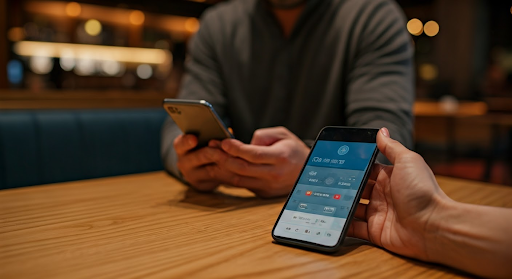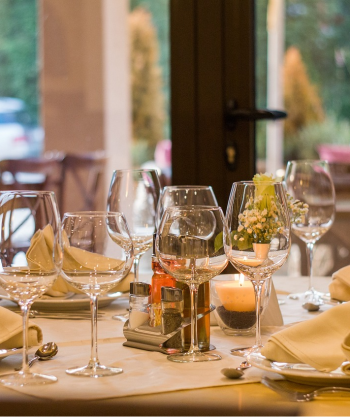
Key Highlights
- Streamlined Payments: Pay at Table technology saves time by letting diners settle bills directly at their tables.
- Enhanced Security: Credit cards remain with customers, reducing fraud risk.
- Faster Table Turnover: Restaurants close tables quicker, minimising wait times and maximising revenue opportunities.
- Flexible Payment Options: Accept multiple payment methods, such as QR codes, credit cards, and mobile wallets.
- Improved Guest Experience: Simplified, efficient payment leaves customers satisfied and strengthens venue reputation.
- Digital Receipts: Easily email receipts to guests for convenience and reduced waste.
Introduction
Creating a great customer experience and guest satisfaction is very important in today’s tough restaurant business. New technology is changing how we eat out. Pay at the table offers a smooth way to pay bills that makes the payment process better. This new method speeds up transactions and solves old problems, leading to quicker service and better customer interactions. By using Pay at Table systems, restaurants improve their guests’ experience, boost satisfaction, and take advantage of new technology in dining.
Exploring the Benefits of Pay at Table: Why Every Customer Will Love It
Modern dining focuses on being efficient and convenient. Pay at table technology provides both effectively. It offers an easy payment process and cuts out extra steps, which helps both customers and restaurants a lot. Diners have a faster and safer checkout experience. Meanwhile, restaurant staff get extra time to improve their service.
Additionally, Pay at Table systems increase guest satisfaction with better flexibility. Whether it’s splitting bills, choosing tipping options, or getting digital receipts, this technology makes dining smoother and more enjoyable for everyone.
1. Enhanced Dining Flexibility and Convenience
Pay at Table technology changes the eating experience by giving customers more convenience. It ensures that they can pay their bills without interrupting their meals. With tools like QR codes and handheld POS systems, diners can make quick payments right at their tables. This helps speed up the checkout process.
QR codes are game-changers since they let diners scan and see a secure site to view menus and pay. This makes things easier and allows for touch-free payments. When combined with handheld POS systems, servers can easily manage whole tables and even split the bills among guests.
This smooth payment method reduces pauses in table service. Customers don’t have to wait for their cards to process at a fixed terminal anymore. Servers now use portable terminals to quickly complete payments, leading to faster service and better guest satisfaction.
2. Quicker Table Turnover for Restaurants
Efficient table turnover is very important for making money. The Pay at Table system helps restaurants do this well. It cuts down the need for servers to walk back and forth to fixed terminals. This means servers can close tables faster. As a result, wait times and wasted resources go down.
- Servers can change table statuses right away, moving seamlessly to open and close tables.
- Guests can pay directly, which makes open tables ready for new diners.
- Fewer queues and fewer hold-ups make operations smoother and more efficient.
Shorter wait times help both diners and staff. This means restaurants can serve more guests at the same time. The faster process lets servers improve the experience for customers sitting at active tables, which makes them happier. Also, being able to handle more closed tables at once helps restaurants boost profits while giving patrons a great dining experience.
3. Increased Security and Reduced Fraud Risk
Security is very important for restaurants and their customers. The Pay at Table system is a great help in this area. When customers keep their credit cards with them during payment, the risk of fraud from skimming or mishandling information goes way down.
Systems like Me&U help protect customer data during transactions. They fix problems that come from human error. This builds trust with diners and gives them peace of mind about the payment process.
Using payment methods with built-in security cuts down on data breaches and chargebacks. With encryption and smooth processes, restaurants can promise their customers that transactions are safe. By focusing on guest safety and lowering fraud risks, Pay at Table technology helps build trust and long-lasting loyalty. This is key for a successful dining experience.
4. Better Tip Management and Distribution
Pay at Table systems make it easier to manage tips. They help both servers and diners by automating how tips are given. With this system, guests can leave tips right on the terminal without having to do the math.
This simple method helps servers get tips quickly and fairly. It cuts down on the need for cash or handwritten notes, which can cause mistakes. Guests are also more likely to give good tips because the system asks for tips based on a percentage or lets them choose their amount.
For restaurants, managing tips better makes servers happier and reduces the time spent on paperwork. The clear way the technology works builds trust among the staff. With faster transactions through Pay at Table, servers can earn more tips. At the same time, diners have an easy way to pay that fits their idea of great service.
5. Personalised Payment Solutions
Pay at Table technology provides customised payment solutions that improve the dining checkout experience for both diners and restaurants. Diners can opt to get their receipts through email, which is an easy and eco-friendly choice instead of paper. Restaurants enjoy lower costs and less waste.
The technology also includes integrated systems that let restaurants capture important information about guest preferences through an account manager feature. This information can be used to send special offers, boosting engagement and keeping customers coming back. By offering these unique solutions, restaurants create strong bonds with their diners.
Personalisation also covers payment options. Diners can pay in different ways, like with QR codes, tap-and-go cards, or mobile wallets. This flexibility shows the restaurant’s dedication to guest satisfaction and highlights its innovative and customer-focused approach in a competitive market.
How Pay at Table Works in a Modern Dining Setting
Pay at Table combines technology and efficiency to change how we dine today. Servers use portable devices to let guests pay safely from their seats. QR codes make things even easier, allowing diners to pay their bills quickly using their smartphones.
This simple system helps reduce the work for staff and cuts down on mistakes for a better checkout. With options for splitting bills and tipping, these new features improve the guest experience. It makes dining faster, simpler, and more fun for everyone.
Step-by-Step Process from Ordering to Payment Completion
The Pay at Table experience starts with easy ordering. After guests eat, servers show them an itemised bill using portable POS systems or apps. Customers can look at the charges, split payments, and choose tipping options right at their table.
Next, diners finalise payments by swiping, tapping, or scanning QR codes. These integrated systems make the payment process easier. They lower manual entry mistakes and speed up transactions. Servers can finish the checkout without needing to go to a fixed terminal.
Finally, the system updates table statuses in real time, showing them as open for new customers. This setup helps keep everything running smoothly. Whether it is a small cafe or a big venue with many floors, the whole payment process becomes quick and satisfying for everyone involved.
Types of Payment Methods Accepted
Pay-at-table systems are great because they are flexible. They accept different payment methods. Diners can use credit cards by swiping, inserting, or tapping. QR codes give tech-savvy guests a quick way to pay digitally.
Also, platforms like Me&U support mobile wallets and tap-and-go options. This means that guests can pay using their smartphones, tablets, or contactless cards anywhere.
For restaurants, having many payment options increases guest satisfaction. Diners like to choose the way they pay. Venues that keep up with trends in dining can offer diverse options, creating a memorable experience for their customers.
Integration with Restaurant Management Systems
Integration with restaurant management systems is a major benefit of Pay at Table technology. This connection between POS systems and terminals gives real-time data to track how much money is made, how fast tables are turned over, and guest trends.
Restaurants use these tools to improve their operations. For example, analytics software shows busy dining times and table situations. This helps managers adjust staff assignments or change workflows before problems happen.
Also, this integration boosts accuracy. Payment details move smoothly between systems. This avoids mistakes and saves time on accounting work. With a unified restaurant management platform, restaurants create a smooth dining experience that is effective for both guests and management teams.
Reducing Wait Times for Servers and Customers
Reducing wait times is important for a better dining experience. Pay at Table technology helps a lot with this. Instead of going to fixed terminals, servers can quickly finish transactions right at the tables. This helps clear queues and speeds up service.
Guests love having less waiting time, especially during busy hours. With real-time updates for tables, servers can take care of many parties at once. This keeps everyone happy during rush times. Faster payment processing allows venues to serve more customers, which increases profits.
For the staff, better workflows lower the stress of managing multiple tables. This lets them focus on providing great service. The easier processes create a positive dining environment where every minute matters for both speed and guest enjoyment.
Conclusion
In conclusion, the “Pay at Table” option is more than a trend. It’s a new way to enjoy dining that makes things better for both customers and restaurant owners. This payment method focuses on convenience, security, and efficiency. It meets the needs of today’s diners who want flexibility and control over their meals. As restaurants use this technology, they can see faster table turnover and happier customers. This will also make the payment process easier for everyone. If you are thinking about using Pay at Table, remember it helps create a stress-free dining experience. Plus, it can help your restaurant succeed in a changing industry. Embrace this new solution and watch your restaurant do well!
Frequently Asked Questions
How does Pay at Table enhance customer satisfaction?
Pay at Table makes customers happier by speeding up the checkout process, reducing wait times, and giving more payment options. By removing problems, guests have a great customer experience with better service. This easy and quick method also helps restaurants be known for good guest satisfaction.



